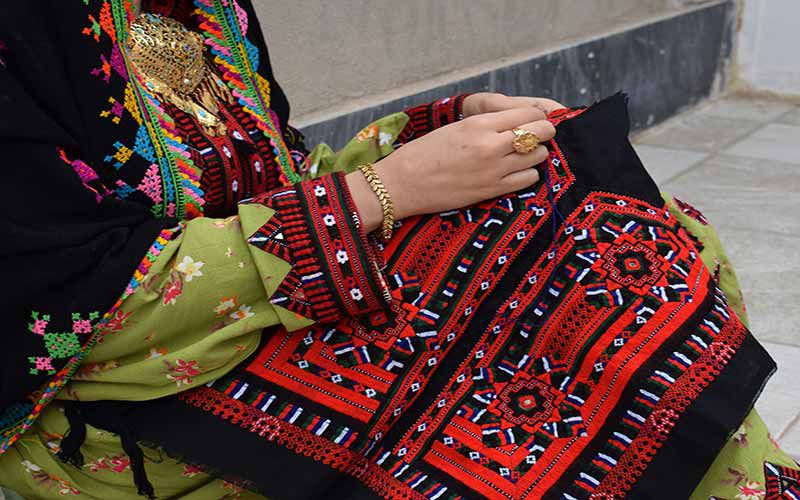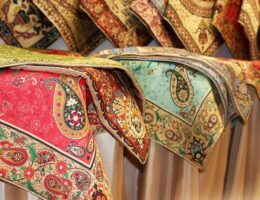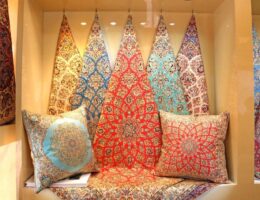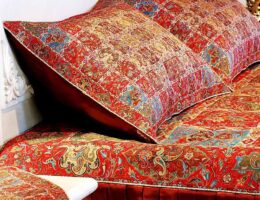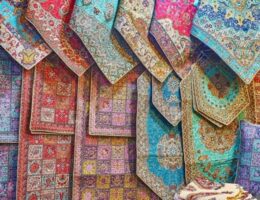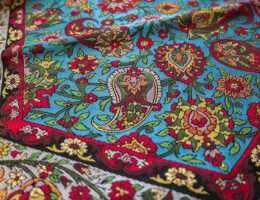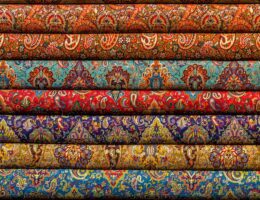IRAN ART EXHIBITION: BALUCHESTAN AND ITS BREATHTAKING NEEDLEWORKS
Baluchestan embroideries are the most exquisite samples of handicrafts in Iran. These needleworks are locally called “Suchan Duzi”. There are many documents that prove this embroidery existed from the early years of Islamic era in this tribe and flourished during the Timurid and Safavid dynasty. Suchan Duzi is most commonly used as a decoration of local dresses.
The needlework covers all over the fabrics, and is used to decorate handcuffs, trousers and are applied in forms like strips in the handcuffs, a piece on the back and the top of the Chadors. Since local dresses are worn by women in many cities and regions, this embroidery is popular in all big or small cities and villages of Zahedan and Saravan in the east and to Iranshahr in the west. The techniques of needlework differ between each nomadic region like Iranshahr (Qasem Abad, Pip, Espakeh, Verkat, Chenef) and region of Khash and Gasht. Qasem Abad is proud to be the hometown of two artists of this craft: Ms. Zarkhatun Baluchi and Ms. Mahtab Jahan Bani.
What is the art of needlework?
The art of needlework is one of the most popular handicrafts and traditional Iranian art. This art has been of special importance among designers from ancient times to the present day. Designers can create beautiful roles according to the patterns in their minds. To create a raw needlework design, the designer first designs his desired role on a fabric with a soft color. The method of sewing Baluchi needlework is that the artists who work in this field start sewing on the design using beautiful colored threads.
After finishing the sewing process, a beautiful and colorful sewn design will be placed in front of your eyes. Using needlework fabrics, you will be able to produce eye-catching products in various fields such as designing and sewing clothes, curtains, tablecloths. This is just a corner of the variety and beauty of the art of needlework.
History of Baloch needlework
The Baluchis are an ethnic group in southeastern Iran and neighboring Pakistan. In addition, Baluch families can be found in India as well as in the Persian Gulf and Oman. Baloch culture is full of traditions, arts and crafts. Baluchi needlework and embroidery is one of the most popular arts and crafts made by women.
The art of needlework is created using yarns with soft colors, beads and small mirrors. The motifs used in this art can be easily linked to the civilization of 7000 thousand years BC. This art flourished during the Timurid and Safavid dynasties. This beautiful and valuable art is an integral part of Baloch culture and is being passed down from generation to generation.
What is a Baluchi needlework tool?
The art of needlework is almost the same as embroidery, but wool yarn is used instead of yarn or embroidery thread. The fabrics used for this art are usually linen and silk fabrics. The use of needles such as sharp needles, creeping needles, fingers and scissors is the most essential tool of this valuable art.
Balochi needlework technique in fashion industry
Fashion affects our lives in many ways and makes ordinary moments a wonderful story. Creating a classic and stylish look requires a proper selection of essentials that allow ideas to be turned into stylish and desirable creations. Today, the art of needlework has attracted the attention of many designers and people highly appreciate this art. This art is used in designing clothes, bags, table decorations and furniture, etc. Baloch artists create beautiful patterns on fabrics for designers with pure ideas. Finally, the product of Baloch artists’ efforts is the products of needlework, which have a special beauty and charm.
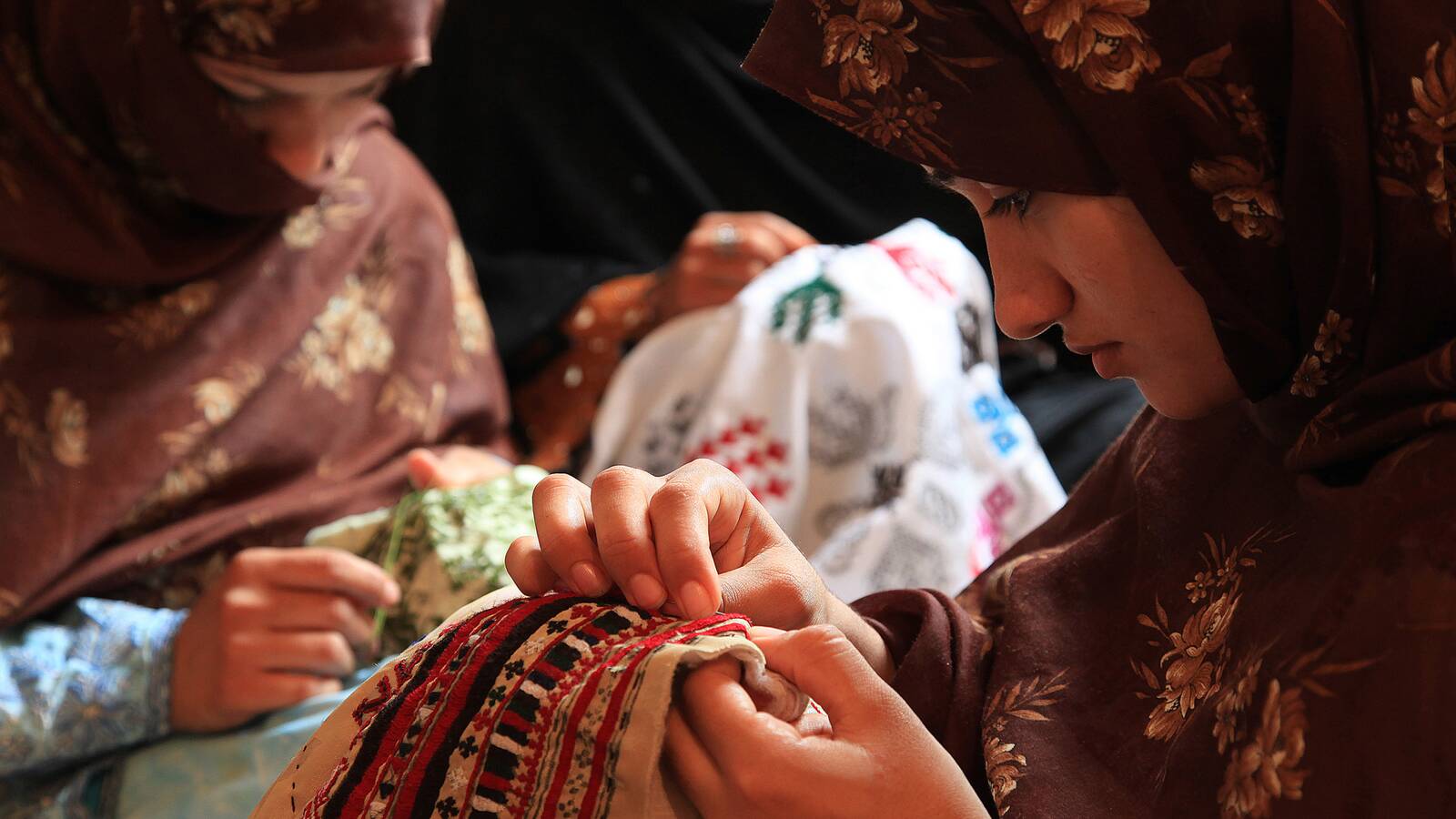
IRAN ART EXHIBITION: Kinds of Baluch embroidery include: Sarafi Duzi, Zarif Duzi, Parivar Duzi and Baluch Duzi. Very bright colors are incorporated into pieces amongst which orange and red are dominant. The details are done in green, blue, white and black. There is a common characteristic between all of the embroideries of these regions and that is using of geometric and linear motifs. Cursive and circular motifs are rarely stitched in Baluch needle works.
The motifs can be divided into three general groups:
1. Geometric, that are the most popular motifs of Baluch works. Triangles, squares and diamonds are main patterns and can be found in other handicrafts such as pottery, too.
2. Natural motifs, which include herbal and animal motifs such as “Gol-e Sohr” or red flower, “Gol-e Chahar Bargi” or four petal flower, “Katarog” or dandelion, “Gol-e Hasht Bargi” or eight petal flower, chicken, “Morg Punch” or feet of the chicken, “Hoshter Domb” or tail of the camel, “Katarpadak” or feet of the insects and wings of the dove.
3. Natural elements, like mountains, rivers and etc. The motif of “Chapras” is the most famous motif of this group, and is a simple representation of waves and motion. In addition to clothing, Baluch embroidery is applied to make covers of holy Quran, Kohl holders, bags and cushions.
